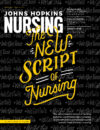Neighborhood impacts risk for older whites but not for blacks
Black older adults face higher odds of hypertension than white older adults whether they live in predominantly white, black, or mixed-race neighborhoods, and whether those places are impoverished or better off financially. White older adults’ hypertension risks, on the other hand, are far more dependentupon where they live, according to “Residential Segregation and Hypertension Prevalence in Black and White Older Adults,” by Kelly Bower, PhD, MPH, RN, and colleagues from the Bloomberg School of Public Health.
“Partitioning racial status by individual and neighborhood poverty did not fully explain the disparity in hypertension prevalence between black and white older adults,” the authors write of the nationally representative sample of those 50 and older. “It is possible that unmeasured social factors that are associated with neighborhood poverty, such as lack of access to grocery store and health care facilities, contribute to the unaccounted racial differences in hypertension prevalence.”
Interventions on individual and neighborhood poverty, then, appear to positively impact poor, white older adults more than black older adults, who face significantly higher odds of hypertension regardless of individual and neighborhood poverty. “Nevertheless, such policies may be beneficial for black older adults as well,” the authors write. “Policies that seek to reduce hypertension prevalence in older adults should consider not only individual-level interventions but also neighborhood-level interventions, particularly measures that seek to reduce levels of neighborhood poverty.”
Publication: Journal of Women’s Health
